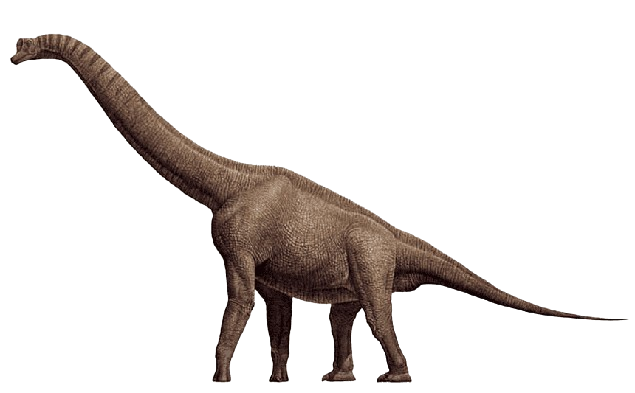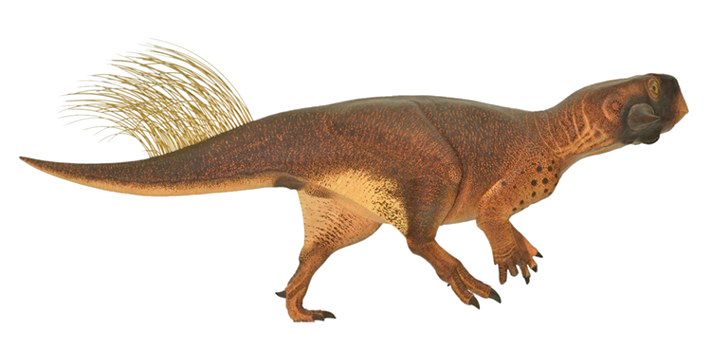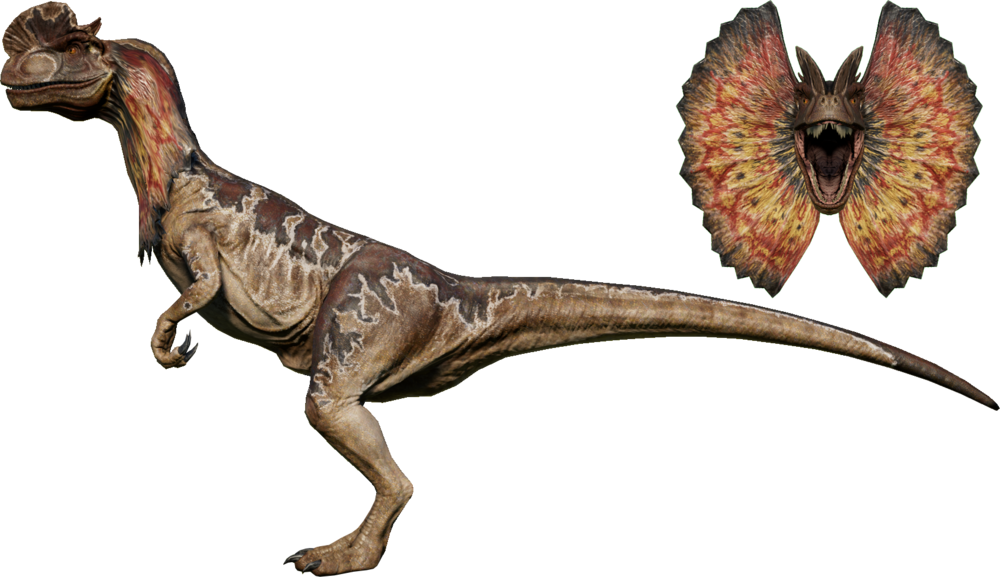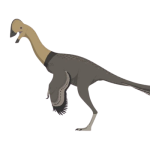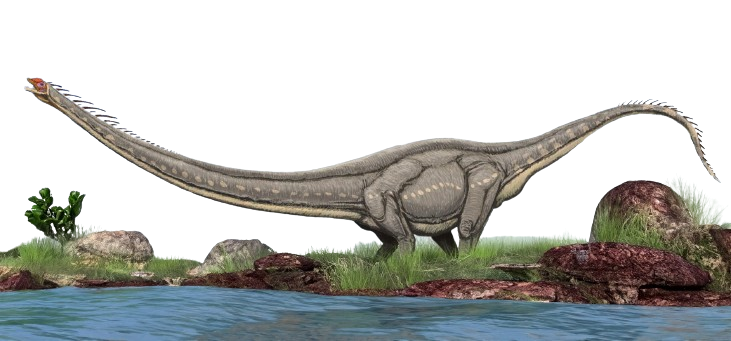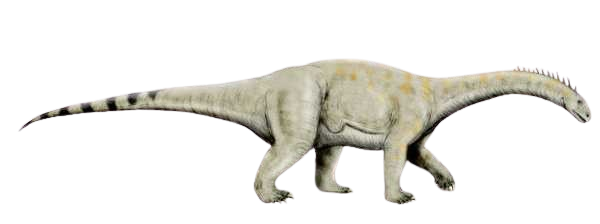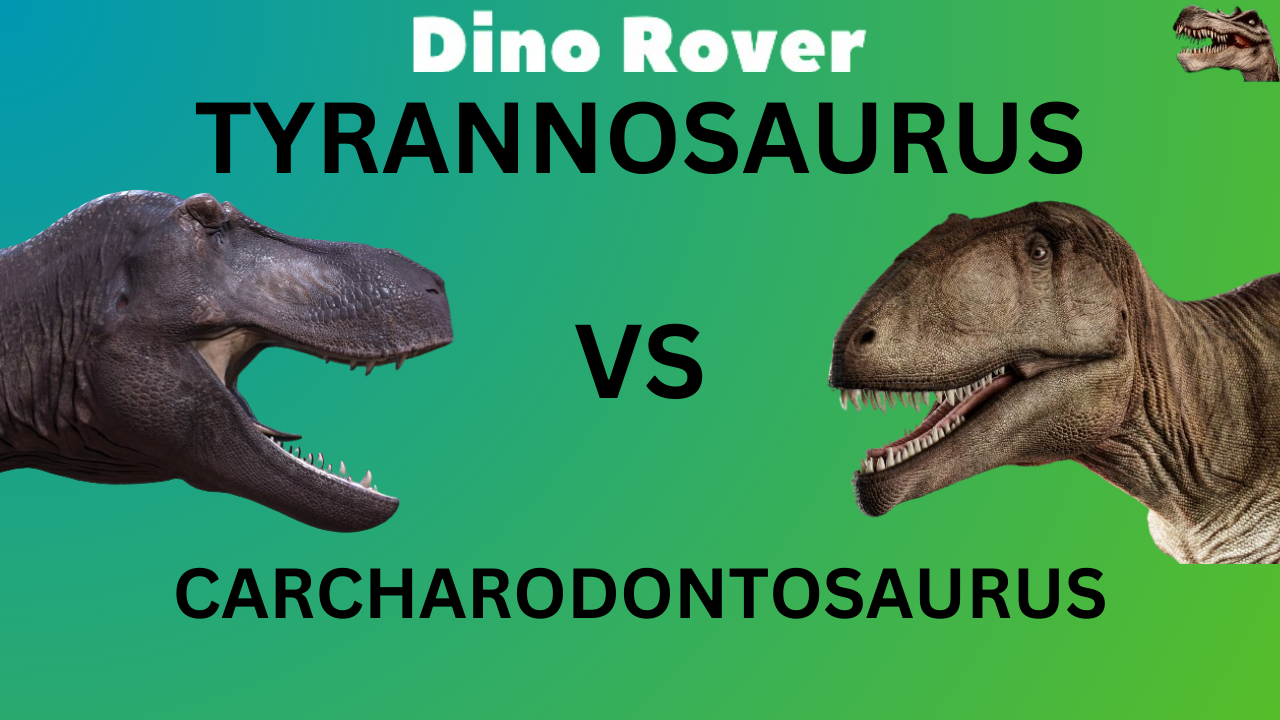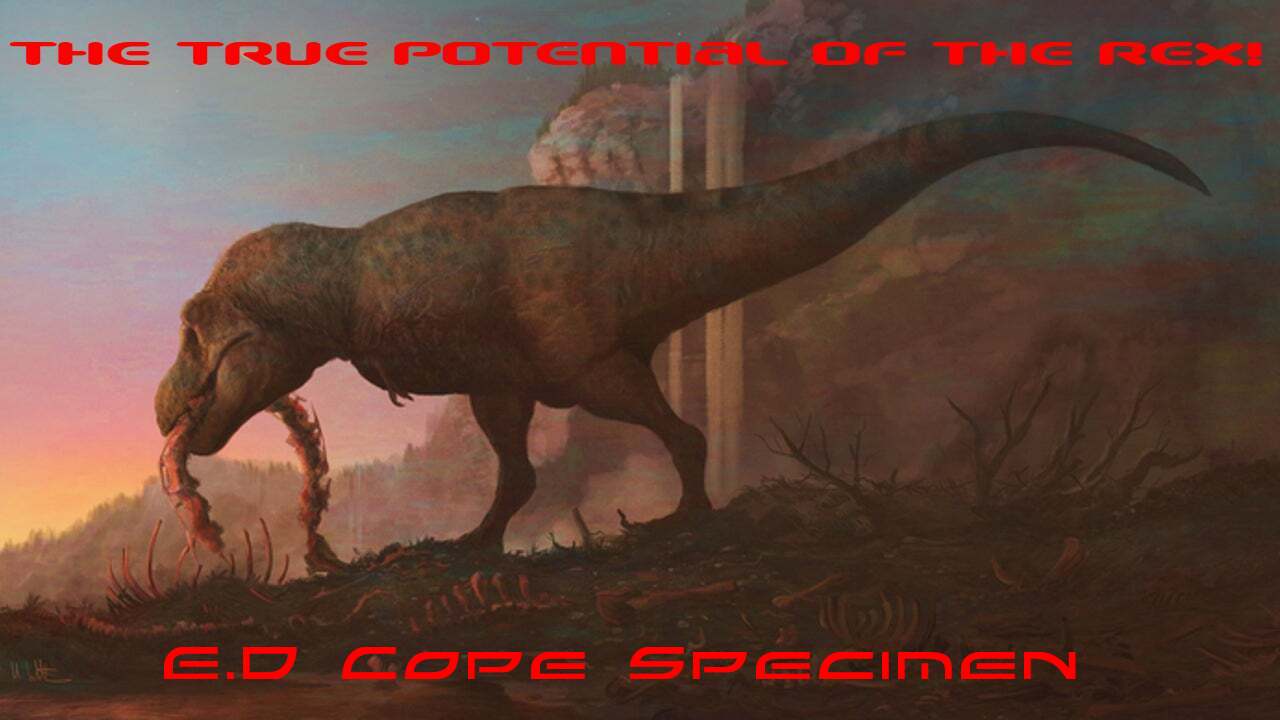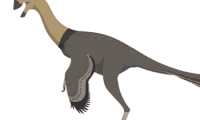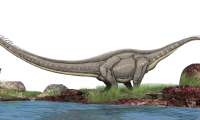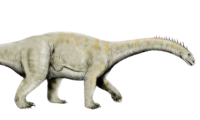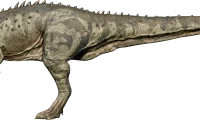Diplodocus, a majestic sauropod that roamed the Earth during the Late Jurassic period, stands out among the giants of the dinosaur world. Stretching an impressive 90 feet (27 meters) in length, with a remarkable 26-foot (8 meters) long neck and a whip-like 45-foot (14 meters) tail, Diplodocus holds a place among the longest land animals in history. Despite its towering stature, the dinosaur’s head was surprisingly diminutive, measuring less than 2 feet.
This colossal herbivore exhibited several distinctive features. Positioned at the top of its head were nostrils, and it sported peg-like teeth exclusively at the front of its jaws. Its front limbs were noticeably shorter than its hind limbs, each equipped with elephant-like, five-toed feet. Remarkably, one toe on each foot featured a thumb claw, likely serving a protective function. Fossilized Diplodocus skin impressions further revealed a row of spines running down its back.
Diplodocus, in comparison to other massive sauropods, boasted a lighter build, possibly weighing in the range of 25 to 30 tons. Beneath its backbone, an array of additional bones with bony protrusions configured like an anvil-shaped “double-beam” likely contributed to supporting and enhancing the mobility of its lengthy neck and tail. A distinct characteristic of Diplodocus was its whip-like tail, postulated to serve a defensive purpose.
Recent discoveries, such as a Diplodocus skin impression featuring spines down the back, contribute to our evolving understanding of this remarkable dinosaur. Intriguingly, research indicates that Diplodocus, along with other diplodocid sauropods like Apatosaurus, likely could not raise their necks beyond approximately 17 feet (5.4 meters) above the ground.
The dinosaur’s abdominal region featured gastralia, thin and fragile hanging belly ribs. These structures played a crucial role in supporting and safeguarding internal organs, such as the lungs, in the middle portion of the body. Contrary to earlier beliefs, sauropods like Diplodocus were once thought to possess a second brain. Contemporary paleontological understanding, however, has debunked this notion, revealing that what was initially considered a second brain was, in fact, an enlargement in the spinal cord around the hip area, surpassing the size of the actual brain.
Diplodocus belonged to the sauropod group, characterized by their large size and herbivorous diet. Despite their colossal appearance, sauropods, including Diplodocus, were not renowned for their intelligence, with their cognitive abilities ranking among the lowest of all dinosaurs. These intriguing aspects collectively paint a vivid picture of Diplodocus, an extraordinary dinosaur that once dominated the ancient landscapes.


